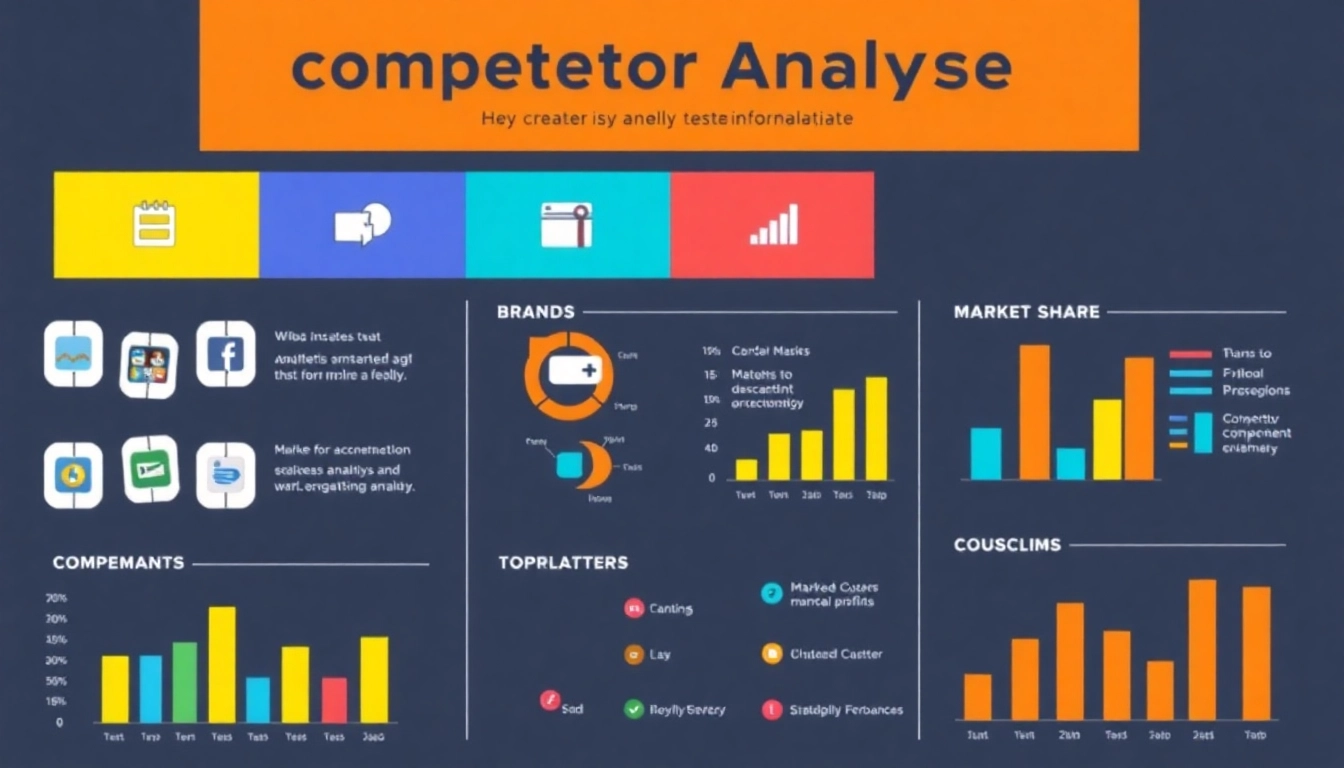Understanding the Role of Content in Sales Strategy
In today’s digital landscape, businesses constantly seek innovative ways to connect with their customers. One of the most effective tactics is leveraging content that drives sales. As the dynamics of consumer behavior shift, understanding how content influences sales becomes crucial for any marketing or sales strategy. Through thoughtful and strategic content creation, brands can nurture leads, boost engagement, and ultimately increase sales.
How Content Influences Buyer Decisions
Content plays a significant role in shaping buyer decisions. In an era where information is at the fingertips of consumers, the content provided by businesses can create the first impression and deepen trust throughout the buyer’s journey. By producing high-quality, relevant, and informative content, brands not only capture attention but also facilitate informed decision-making.
Consider a potential buyer researching a product. They may begin their journey with a simple Google search, leading them to a blog post, a video review, or a case study on the brand’s website. Each piece of content serves to educate the buyer and address their pain points. Consequently, the content consumed can lead to a favorable view of the brand, making it more likely for the buyer to choose that brand over competitors.
Identifying Target Audience Needs
Understanding the target audience is paramount to crafting content that resonates. A thorough analysis of buyer personas can help marketers identify what their audience values, what challenges they face, and how they seek solutions. This knowledge allows brands to tailor their content to meet specific audience needs, resulting in more effective engagement.
For instance, if a target persona indicates a preference for video content, brands may opt to create engaging video tutorials or testimonials instead of text-heavy blog posts. By prioritizing content that aligns with the audience’s preferences and needs, businesses can significantly enhance their impact on sales.
Aligning Content with Sales Goals
Aligning content with overarching sales goals is critical to the success of content marketing. It is not enough to produce highly engaging content; businesses must ensure that this content supports their sales objectives. For instance, if a company aims to increase its market share among young professionals, its content strategy should focus on platforms and topics that resonate with that demographic.
Moreover, businesses must track the performance of their content through various metrics—such as lead generation, conversion rates, and engagement levels—to evaluate its effectiveness toward achieving sales goals. By continuously realigning their content strategy based on these insights, companies can keep their efforts focused and optimize for better results.
Effective Types of Content That Drive Sales
When it comes to driving sales through content, certain types of content outperform others based on their format and delivery. Understanding which forms resonate most with your target audience can guide content development.
Blog Posts and Articles: Engaging Prospects
Blog posts and articles remain a cornerstone of content marketing. They offer an opportunity for brands to provide value through knowledge-sharing while establishing thought leadership in their industry. Through informative blog content addressing common pain points, brands can engage prospects and guide them further down the sales funnel.
For example, a company selling health supplements could create a series of blog posts discussing the health benefits of its products, fitness tips, and success stories. This type of content not only educates potential customers but also helps them make informed purchasing decisions.
Videos and Multimedia: Captivating Your Audience
Video content is rapidly gaining traction as a preferred format among online consumers. Videos can convey information quickly and effectively, appealing to viewers who may prefer visual learning over reading. From product demos and how-to guides to interviews and testimonials, video content captures audience attention in a way that written content often cannot.
Brands should consider utilizing platforms like YouTube, Instagram, and TikTok, where video consumption is high. Additionally, incorporating live videos can create a sense of urgency and exclusivity, prompting immediate action from viewers.
Case Studies: Building Trust and Authority
Case studies serve as powerful tools for showcasing real-world results. They provide potential customers with examples of how a product or service has successfully solved specific problems for existing clients. A well-crafted case study highlights challenges faced, solutions provided, and the measurable results achieved. This not only builds trust with prospects but also establishes the brand’s authority within its industry.
For instance, a B2B software company can share a case study detailing how its product increased productivity for a client by a certain percentage, supported by data and testimonials. This type of content not only persuades prospects but also adds credibility to the brand’s offerings.
Best Practices for Implementing Content Marketing
Creating content that drives sales requires a well-defined strategy and adherence to best practices. Here are some essential practices to consider for effective content marketing implementation.
Creating a Consistent Content Calendar
A consistent content calendar keeps your marketing efforts organized and ensures you deliver regular content to your audience. By planning out topics, formats, and publishing schedules in advance, brands can maintain a steady flow of content that aligns with their marketing strategies. A content calendar also helps avoid last-minute scrambles for content creation, which can lead to lower quality outputs.
Moreover, by aligning content topics with significant dates, product launches, or promotional campaigns, brands can capitalize on relevant trends and boost audience engagement.
Utilizing SEO Techniques for Maximum Reach
To ensure your content reaches its intended audience, it is important to implement SEO best practices. This includes conducting keyword research to identify the terms and phrases your target audience is searching for. By incorporating these keywords naturally within your content, you enhance its visibility in organic search results.
On-page SEO techniques, such as optimizing meta tags, headers, and image alt text, alongside off-page strategies like building backlinks, create a robust foundation for content marketing that drives sales. Regularly updating older content with new information and optimized keywords also contributes to maintaining search engine rankings.
Incorporating Calls to Action
Every piece of content should include a clear call to action (CTA). A well-crafted CTA guides readers on the next steps they should take after engaging with your content, whether it’s subscribing to a newsletter, downloading a resource, or making a purchase. The CTA should align with the content’s intent and the audience’s expectations, making it a seamless transition for the reader.
Incorporating engaging CTA buttons, such as “Get Your Free Trial” or “Download Now,” can drive conversions while maintaining a natural flow to your content. Remember to ensure that CTAs lead to relevant landing pages for maximum effectiveness.
Measuring the Impact of Content on Sales
To truly understand the effectiveness of your content marketing efforts, it is essential to have a system in place for measuring their impact on sales. This allows for strategic adjustments and optimizations that can enhance results over time.
Key Performance Indicators to Track
Setting clear Key Performance Indicators (KPIs) is crucial for measuring content success. Some common KPIs to consider include:
- Traffic to Content: Measuring the number of visitors to your content pieces.
- Engagement Metrics: Assessing likes, shares, comments, and time spent on pages.
- Lead Generation: Tracking the number of leads captured through gated content and forms.
- Conversion Rates: Analyzing the number of readers who take desired actions, such as purchases.
- Return on Investment (ROI): Measuring the revenue generated against the cost of content creation and distribution.
Tools for Analyzing Content Effectiveness
Several tools can help businesses analyze content performance effectively. Google Analytics provides insights into web traffic sources, user behavior, and conversion rates, while social media platforms offer analytics to track engagement and conversions. Additionally, marketing automation tools can help evaluate the effectiveness of email campaigns and track lead generation efforts.
Adjusting Strategies Based on Performance Metrics
Using the insights gained from performance tracking enables businesses to adjust their content strategies. Analyzing which types of content perform best aids in guiding future content creation efforts. For instance, if video content consistently outperforms written articles in driving conversions, a brand may decide to invest more resources into video production. Adjusting strategies based on solid data ensures that content marketing remains effective and aligned with sales objectives.
Future Trends in Content Marketing
The landscape of content marketing continues to evolve, compelling businesses to stay ahead of the curve in order to maximize their efforts. Here are some future trends that could influence how content drives sales.
Personalization in Content Creation
Personalization is becoming increasingly important in content marketing. Consumers expect tailored experiences based on their behavior, preferences, and demographics. Utilizing data analytics and AI, businesses can create highly personalized content that speaks directly to individual customers’ needs and interests. This level of customization not only improves engagement but also fosters loyalty among consumers.
Leveraging AI for Enhanced Insights
Artificial Intelligence (AI) is transforming the realm of content marketing. From predictive analytics that forecast consumer behavior to tools that assist in content creation, AI has the potential to streamline processes and enhance content effectiveness. Brands can leverage AI to identify trending topics, optimize SEO, and analyze customer interactions, allowing for a more strategic approach to content marketing.
Emerging Platforms and Technologies Driving Sales
As new platforms and technologies continue to emerge, they present fresh opportunities for engaging audiences. Social commerce, where brands sell directly through social media platforms, is on the rise, making it imperative for businesses to adapt their content accordingly. Similarly, augmented reality (AR) and virtual reality (VR) offer exciting avenues for immersive content experiences, captivating audiences in innovative ways.
In conclusion, creating effective content that drives sales is more than just distribution. It requires understanding the audience, delivering value consistently, and measuring effectiveness to ensure continuous improvement. By embracing these strategies, businesses can significantly enhance their sales efforts while fostering deeper connections with their target audience.



